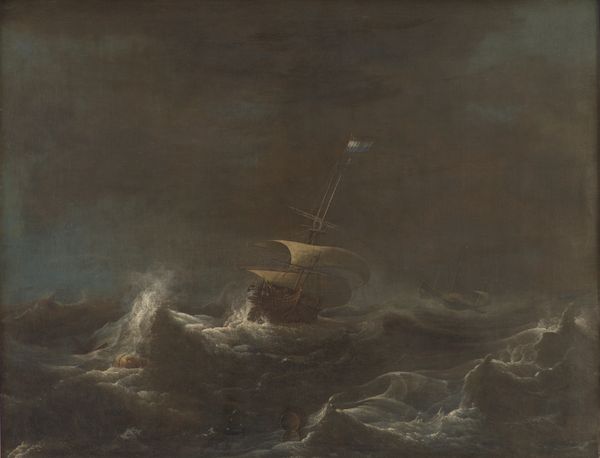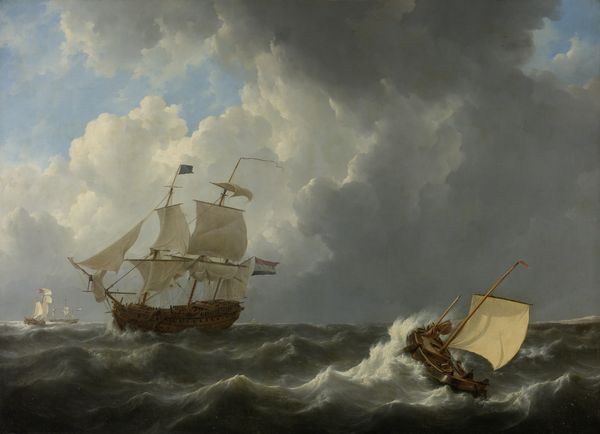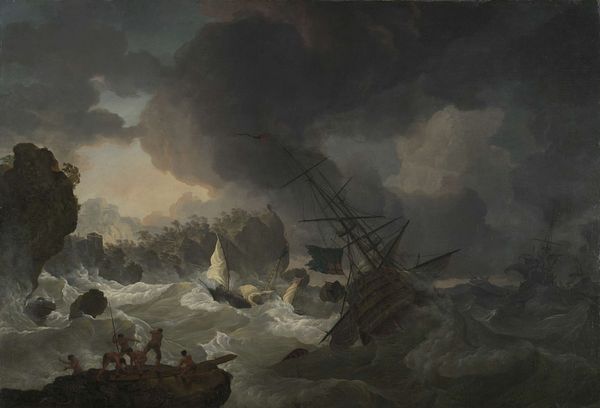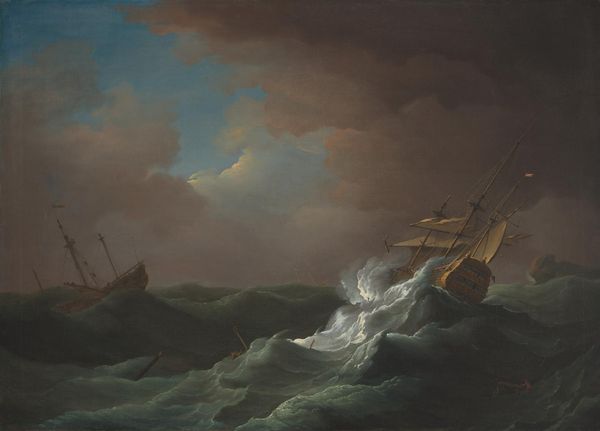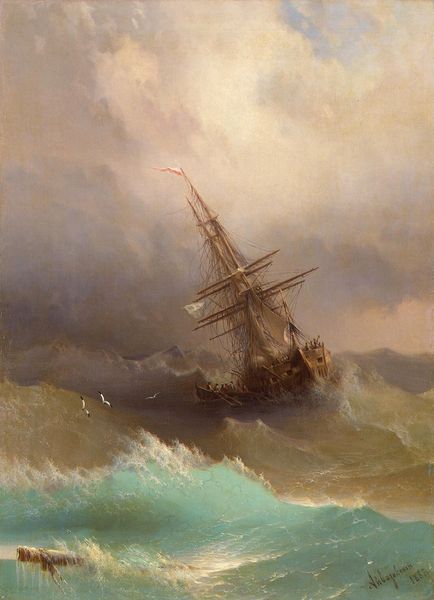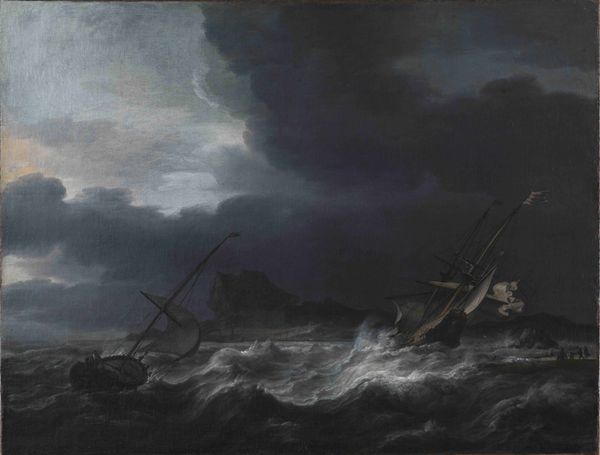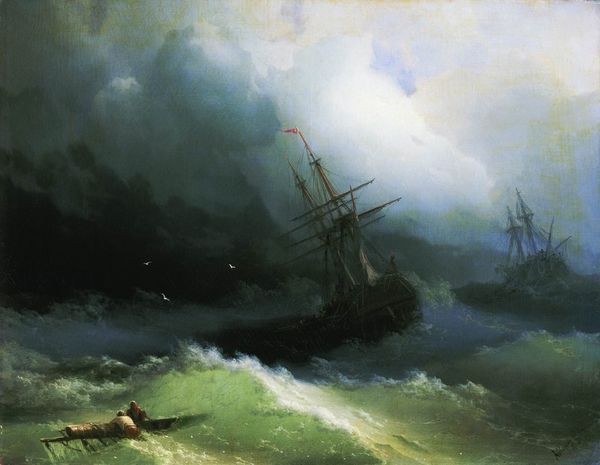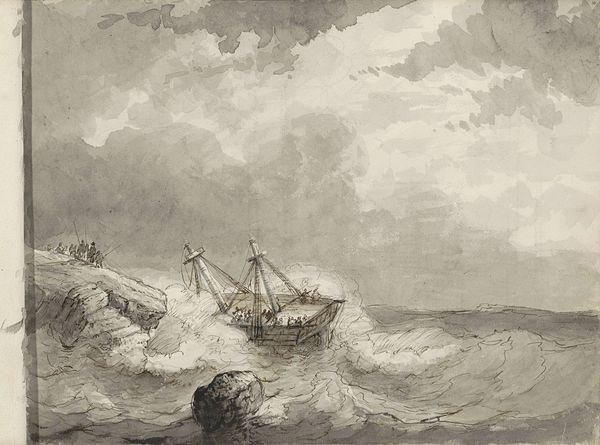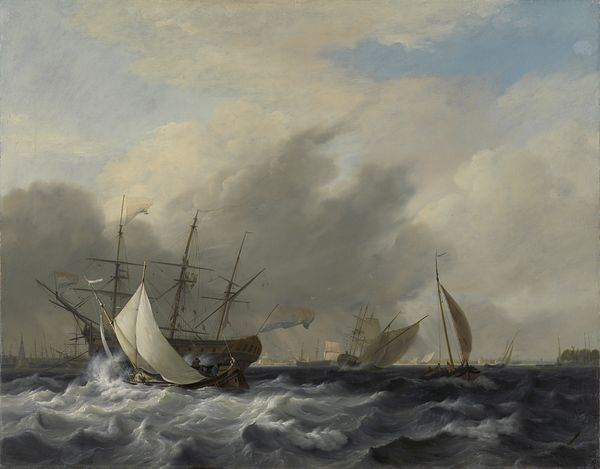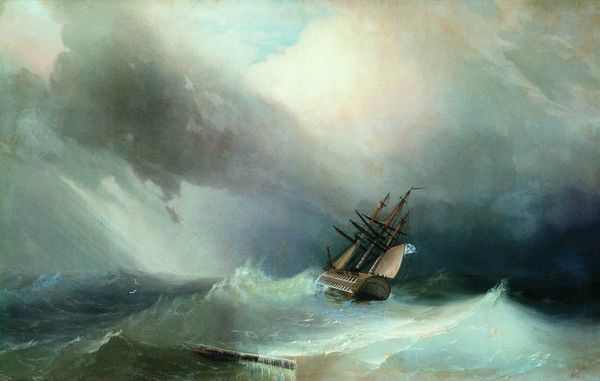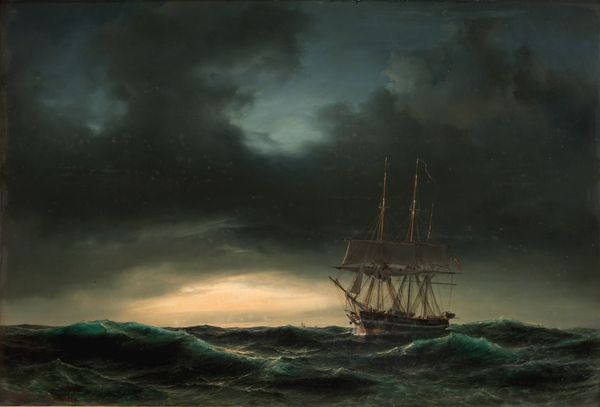
painting, oil-paint, oil-on-canvas
#
boat
#
16_19th-century
#
painting
#
oil-paint
#
landscape
#
oil painting
#
romanticism
#
united-states
#
history-painting
#
oil-on-canvas
Dimensions: 51.4 × 76.8 cm (20 1/4 × 30 1/4 in.)
Copyright: Public Domain
Curator: What a dramatic scene. This is "Shipwreck near a Rocky Coast" by Thomas Birch, completed in 1833. Editor: My first impression is bleak. It's a rather monochromatic work dominated by tumultuous waves and a sky pregnant with storm. There's a real sense of danger. Curator: Indeed. Birch’s composition, using oil on canvas, certainly conveys a romantic sensibility. Note how the light catches the crests of the waves, almost mimicking the forms of the shattered ship. Editor: Yes, but I'm drawn to how the artist handles the oil paint itself. Look at the brushstrokes. They're thick, almost sculptural in places, especially in rendering the waves. It really brings a physicality to the experience. I'm interested in how paint is handled as material to represent force and chaos. Curator: And that treatment underscores the drama. The formal arrangement is also compelling, it emphasizes the futility of human endeavors against the forces of nature. See how the ship and even the struggling lifeboat are dwarfed? Editor: I see a social commentary implied in that wreckage, not just individual strife but the material failure of human hubris against nature. Birch’s process gives value to the tools used. Curator: His earlier works, particularly the detailed ship portraits, contrast strikingly with this portrayal. This is history painting, certainly. I understand this narrative to focus on broader themes like human frailty in a tempest. Editor: But what are the real conditions of seafaring and maritime culture implied within? This is not solely a high-minded philosophical point—shipbuilding, merchant activity and sailing depend upon the exploitation of laborers on an unimaginable scale to nineteenth century art consumers. Curator: It's compelling to juxtapose Birch's rendering with a deep appreciation for the physical properties of oil paint. Editor: Yes, thinking about that craft element highlights the artist’s connection with industry as much as nature itself. Curator: Thank you for helping to examine how the composition of paint lends power to a historical artwork. Editor: A perspective emphasizing art’s connection to material production as well can make the viewer engage with art in unexpected and very meaningful ways.
Comments
No comments
Be the first to comment and join the conversation on the ultimate creative platform.

